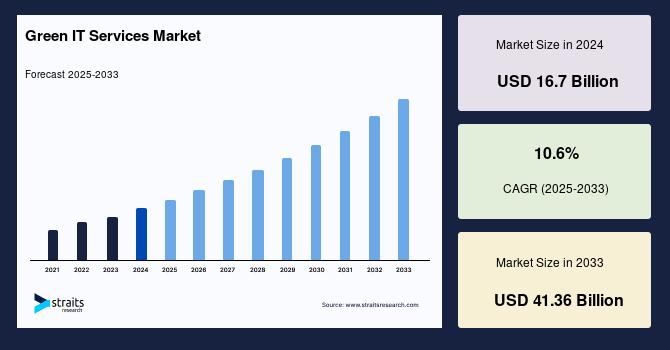Shocking new report reveals toxic ‘Trojan horse’ spreading unchecked: ‘Hazardous’ – yahoo.com

Report on the Use of Sewage Sludge in Agriculture and its Conflict with Sustainable Development Goals
1.0 Introduction and Overview
An investigation into the agricultural application of sewage sludge, marketed as a low-cost fertilizer, reveals significant environmental and health risks that directly contravene multiple United Nations Sustainable Development Goals (SDGs). This report details the scale of the practice in England, the nature of the contaminants involved, and the profound negative implications for sustainable development, particularly concerning health, water quality, responsible production, and terrestrial ecosystems.
2.0 Analysis of Current Practices and Contamination
2.1 Scale of Application
Current data indicates a widespread and systematic application of sewage sludge on agricultural lands:
- In England, approximately 846,575 tons of sewage sludge are applied annually.
- This application covers over 370,658 acres of agricultural land.
This practice is incentivized by economic factors, offering a cheaper disposal method for water companies and a free or low-cost fertilizer alternative for farmers facing rising costs. However, this economic convenience masks a significant environmental liability.
2.2 Contaminant Profile and Regulatory Gaps
The sludge, described by an industry regulator as a “Trojan horse,” contains a hazardous mixture of pollutants not currently tested for under existing regulations. Key contaminants include:
- Per- and polyfluoroalkyl substances (PFAS), also known as “forever chemicals”
- Pharmaceutical residues
- Endocrine disruptors
- Microplastics
The report highlights that industrial liquid waste, including landfill leachate, is being channeled through wastewater treatment plants, effectively transforming municipal sewage sludge into hazardous waste disguised as fertilizer.
3.0 Implications for Sustainable Development Goals (SDGs)
The application of contaminated sewage sludge presents a direct challenge to the achievement of several key SDGs.
3.1 SDG 3: Good Health and Well-being
The practice poses a severe threat to public health as toxic substances bioaccumulate in the food chain.
- Food Chain Contamination: Evidence suggests that chemicals like PFAS are accumulating in crops and livestock, subsequently entering the human food supply.
- Direct Health Impacts: PFAS exposure is linked to serious health concerns, including cancer, compromised immune systems, and reproductive disorders. Case studies from the United States, such as a Maine farmer whose family showed high blood levels of PFAS, underscore the direct human health risks.
3.2 SDG 6: Clean Water and Sanitation & SDG 12: Responsible Consumption and Production
The management of sewage sludge in this manner undermines goals for clean water, sanitation, and responsible production patterns.
- Failure of Responsible Production (SDG 12): The practice represents a linear and irresponsible production model, where industrial waste is not properly managed at the source but is instead disguised and redistributed into the environment and food system. This circumvents more appropriate disposal methods like incineration.
- Compromised Water and Sanitation (SDG 6): By accepting industrial waste, sewage treatment facilities are failing their sanitation mandate. Furthermore, runoff and leaching from treated fields can contaminate ground and surface water sources, as seen in a Pennsylvania community grappling with PFAS-contaminated water linked to historical sludge application.
3.3 SDG 15: Life on Land
The long-term viability of terrestrial ecosystems and agricultural land is at critical risk.
- Soil Degradation: The introduction of a toxic cocktail of chemicals threatens the long-term health, fertility, and sustainability of farmland.
- Ecosystem Contamination: The persistent nature of contaminants like PFAS leads to irreversible damage to soil ecosystems, jeopardizing future agricultural productivity and biodiversity. The case of a third-generation cattle rancher in Michigan, whose land and beef were contaminated, exemplifies the lasting harm to agricultural heritage and land value.
4.0 Regulatory Status and Recommendations
4.1 Global and Regional Responses
Regulatory action to mitigate this threat varies globally, indicating a growing recognition of the problem:
- Bans: The practice is banned in several European nations, including Switzerland. In the United States, Maine is the only state to have enacted an outright ban.
- Limitations: Other jurisdictions, including Texas, Oklahoma, and a town in New York, are considering or have proposed limitations on the use of sewage sludge.
4.2 Path Forward: Aligning with SDG Principles
Advocates and experts recommend a shift in regulatory focus to align with SDG principles of precaution and pollution prevention.
- Upstream Regulation: The primary recommendation is to implement stringent controls on what industrial facilities are permitted to discharge into public sewer networks. This addresses the pollution at its source, in line with SDG 12.
- Adoption of Best Practices: A transition away from land application towards safer disposal or treatment technologies is necessary to protect public health (SDG 3) and preserve the integrity of land and water resources (SDG 6 and SDG 15).
Analysis of Sustainable Development Goals (SDGs) in the Article
1. Which SDGs are addressed or connected to the issues highlighted in the article?
The article on the use of toxic sewage sludge as fertilizer touches upon several interconnected Sustainable Development Goals. The primary issues of land contamination, water pollution, food safety, and human health risks directly link to the following SDGs:
- SDG 2: Zero Hunger – The contamination of agricultural land and the food chain threatens food safety and sustainable agricultural practices.
- SDG 3: Good Health and Well-being – The presence of hazardous chemicals like PFAS in the environment and food chain poses direct risks to human health.
- SDG 6: Clean Water and Sanitation – The core issue revolves around wastewater treatment byproducts (sewage sludge) and their impact on water and soil quality.
- SDG 12: Responsible Consumption and Production – The article highlights the improper management of industrial and municipal waste, turning a potential resource into a source of pollution.
- SDG 15: Life on Land – The practice directly causes soil pollution and land degradation, threatening the long-term health and sustainability of terrestrial ecosystems.
2. What specific targets under those SDGs can be identified based on the article’s content?
Based on the specific problems discussed, the following targets are most relevant:
- Target 2.4: “By 2030, ensure sustainable food production systems and implement resilient agricultural practices… that progressively improve land and soil quality.”
- Explanation: The article explicitly describes the spreading of toxic sewage sludge as a practice that “threatens the long-term health of the land” and contaminates crops and livestock. This is the opposite of a sustainable agricultural practice and directly degrades soil quality, making this target highly relevant.
- Target 3.9: “By 2030, substantially reduce the number of deaths and illnesses from hazardous chemicals and air, water and soil pollution and contamination.”
- Explanation: The article details how sludge contains a “toxic cocktail” including PFAS, which are linked to “cancer, poor immunity, and reproductive disorders.” The case of the Maine farmer with high PFAS levels in his blood and the community in Pennsylvania with contaminated water directly illustrates the health risks from soil and water contamination addressed by this target.
- Target 6.3: “By 2030, improve water quality by reducing pollution, eliminating dumping and minimizing release of hazardous chemicals and materials… and substantially increasing recycling and safe reuse globally.”
- Explanation: The article describes how industrial waste and landfill leachate enter the sewer network, leading to the release of hazardous materials (PFAS, pharmaceuticals) onto land, which can then contaminate water sources. The practice is presented as an unsafe “reuse” of sludge, directly contradicting the goal of improving water quality and ensuring safe reuse of wastewater byproducts.
- Target 12.4: “By 2020, achieve the environmentally sound management of chemicals and all wastes throughout their life cycle… and significantly reduce their release to air, water and soil in order to minimize their adverse impacts on human health and the environment.”
- Explanation: The central theme is the mismanagement of sewage sludge waste. The article notes that industries use wastewater plants for cheap disposal of liquid waste and that “current regulations don’t test for these pollutants.” This points to a failure in the environmentally sound management of chemical waste, leading to its release into the soil and the environment.
- Target 15.3: “By 2030, combat desertification, restore degraded land and soil… and strive to achieve a land degradation-neutral world.”
- Explanation: The article states that the sludge “threatens the long-term sustainability of farmland.” The contamination described, which led a Maine farmer to shut down his operation, is a form of land degradation. The spreading of 846,575 tons of sludge over 370,658 acres in England is a direct contributor to the degradation of agricultural soil, making this target relevant.
3. Are there any indicators mentioned or implied in the article that can be used to measure progress towards the identified targets?
The article provides several quantitative and qualitative data points that can serve as or imply indicators for measuring progress:
- For Target 6.3 & 15.3:
- Indicator: The volume and land area affected by sewage sludge application.
- Explanation: The article specifies “around 846,575 tons of sewage sludge” is spread over “more than 370,658 acres of agricultural land in England” annually. A reduction in these figures would indicate progress in reducing land and potential water pollution.
- For Target 3.9:
- Indicator: Levels of contaminants in humans and food products.
- Explanation: The article mentions “blood tests revealed high levels of PFAS” in a farmer and that a “health advisory was placed on his beef.” Monitoring the incidence and levels of such contamination in affected populations and the food supply would be a direct indicator of health risks.
- For Target 12.4:
- Indicator: Implementation of regulations and bans on hazardous materials.
- Explanation: The article states that “current regulations don’t test for these pollutants” in the UK, but that Switzerland and the U.S. state of Maine have “outright banned its application.” The number of jurisdictions implementing testing requirements or bans serves as a clear policy-based indicator of progress towards the sound management of this waste.
- For Target 2.4:
- Indicator: Area of agricultural land under sustainable practices (i.e., free from toxic sludge).
- Explanation: The article mentions a Maine organic farmer who had to “shut down his operation” due to contamination. Tracking the acreage of farmland where sludge application is discontinued and sustainable fertilizers are used instead would measure progress towards this target.
4. Summary Table of SDGs, Targets, and Indicators
| SDGs | Targets | Indicators Identified in the Article |
|---|---|---|
| SDG 2: Zero Hunger | 2.4: Ensure sustainable food production systems and improve land and soil quality. | Area of agricultural land where sludge application is discontinued (e.g., the farm in Maine that was shut down). Health advisories placed on food products (e.g., the advisory on beef from a Michigan ranch). |
| SDG 3: Good Health and Well-being | 3.9: Substantially reduce illnesses from hazardous chemicals and water/soil pollution. | Measured levels of PFAS in human blood tests. Incidence of health concerns linked to PFAS (cancer, poor immunity, reproductive disorders) in affected communities. |
| SDG 6: Clean Water and Sanitation | 6.3: Improve water quality by reducing pollution and minimizing the release of hazardous chemicals. | Volume of sewage sludge spread on land (846,575 tons in England). Reports of contaminated water sources (e.g., the Pennsylvania community). |
| SDG 12: Responsible Consumption and Production | 12.4: Achieve environmentally sound management of chemicals and all wastes. | Existence and enforcement of regulations for testing pollutants in sludge. Number of jurisdictions banning the practice (e.g., Switzerland, Maine). |
| SDG 15: Life on Land | 15.3: Combat land degradation and restore degraded land and soil. | Total area of agricultural land affected by sludge application (370,658 acres in England). Measurement of soil contamination levels with PFAS and other toxins. |
Source: yahoo.com

What is Your Reaction?
 Like
0
Like
0
 Dislike
0
Dislike
0
 Love
0
Love
0
 Funny
0
Funny
0
 Angry
0
Angry
0
 Sad
0
Sad
0
 Wow
0
Wow
0
































_1.png?#)













































